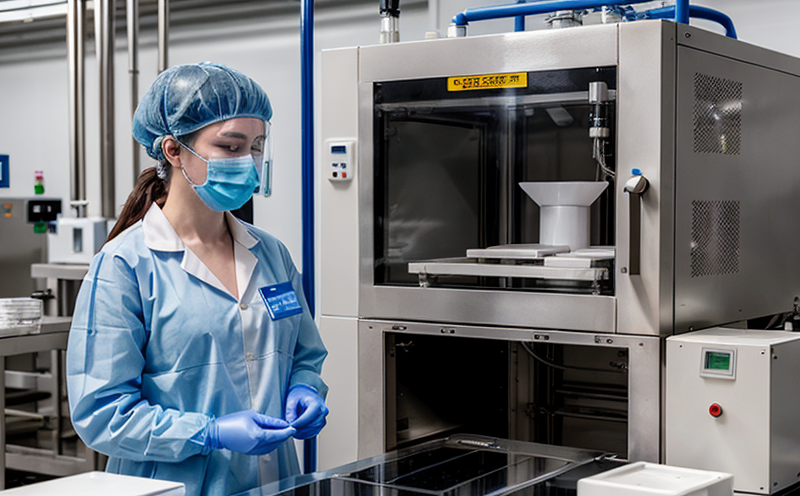GMP Intermediate Stability Testing
In the pharmaceutical industry, Good Manufacturing Practice (GMP) Intermediate Stability Testing is a critical component of ensuring that products meet all regulatory standards and are safe for long-term use. This testing evaluates the stability of drug products over time to determine their shelf life under specified storage conditions. Compliance with GMP standards is mandatory in many countries, including the United States (US), Europe, Japan, and other regions where pharmaceuticals are manufactured or sold.
GMP Intermediate Stability Testing involves subjecting drug formulations to various environmental conditions that simulate real-world storage scenarios. The primary objective is to assess how well the product retains its chemical integrity and efficacy over time. This process helps manufacturers determine whether the product remains stable within specified limits, ensuring consistent quality throughout its shelf life.
Key parameters measured during GMP Intermediate Stability Testing include:
- Physical properties such as color, odor, particle size distribution
- Chemical stability, including degradation products and impurities
- Pharmacological activity (for active pharmaceutical ingredients)
- Bioavailability and bioequivalence studies (if applicable)
- Microbiological testing to ensure sterility and safety
The testing protocol is designed according to international standards, such as those outlined in ISO or USP guidelines. These protocols ensure consistency across different laboratories and provide a standardized approach for evaluating product stability.
Intermediate Stability Testing typically lasts between three and six months, depending on the specific drug formulation and regulatory requirements. During this period, samples are periodically analyzed to monitor changes over time. The results of these tests play a crucial role in determining the final shelf life of the product as stated on the label.
Pharmaceutical companies rely heavily on accurate and reliable Intermediate Stability Testing to avoid costly recalls and ensure patient safety. By investing in robust testing practices, manufacturers can build consumer trust and comply with stringent regulatory requirements.
Why It Matters
The importance of Intermediate Stability Testing cannot be overstated in the pharmaceutical industry. Ensuring that a drug remains stable over its intended shelf life is paramount for several reasons:
- Patient Safety: Unstable products can lead to ineffective treatment or, worse, harmful side effects.
- Regulatory Compliance: Failure to meet GMP standards can result in product recalls and legal penalties.
- Consumer Trust: Consistent quality builds trust with healthcare providers and consumers alike.
- Economic Efficiency: Early detection of stability issues reduces the risk of costly recalls and market withdrawals.
In summary, Intermediate Stability Testing is not just a regulatory requirement but a vital step in maintaining product integrity and patient safety. By adhering to rigorous testing protocols, pharmaceutical companies can ensure they meet all necessary standards while minimizing risks associated with unstable products.
International Acceptance and Recognition
GMP Intermediate Stability Testing is widely recognized by international organizations and regulatory bodies:
- World Health Organization (WHO): WHO guidelines recommend intermediate stability testing as part of the overall quality assurance process.
- European Medicines Agency (EMA): EMA regulations require this type of testing for new drug submissions to ensure compliance with EU standards.
- United States Food and Drug Administration (FDA): FDA guidelines mandate intermediate stability testing as part of the New Drug Application process.
- International Conference on Harmonisation (ICH): ICH Q1A(R2) provides detailed guidance for conducting this type of testing, ensuring consistency across different countries.
The acceptance and recognition of Intermediate Stability Testing by these bodies underscore its importance in maintaining global pharmaceutical standards. Compliance with these guidelines ensures that products are safe, effective, and reliable when they reach the market.
Use Cases and Application Examples
| Use Case | Description |
|---|---|
| New Drug Development | Intermediate Stability Testing is conducted on new drug formulations to ensure they meet stability criteria before approval. |
| Manufacturing Process Changes | Testing is performed when there are changes in manufacturing processes or raw materials to assess potential impacts on product stability. |
| Product Reformulations | This type of testing helps identify any issues that arise from modifications made during the development lifecycle. |
| Application Example | Description |
|---|---|
| A novel antihypertensive medication | The drug was found to degrade rapidly under certain temperature and humidity conditions, necessitating adjustments in the storage instructions for optimal shelf life. |
| An oral solid dosage form | Testing revealed that the product's disintegration time increased significantly after two months. Adjustments were made to improve processing methods. |
The examples above demonstrate how Intermediate Stability Testing plays a crucial role in identifying potential issues early on, allowing for corrective actions before products reach consumers.





